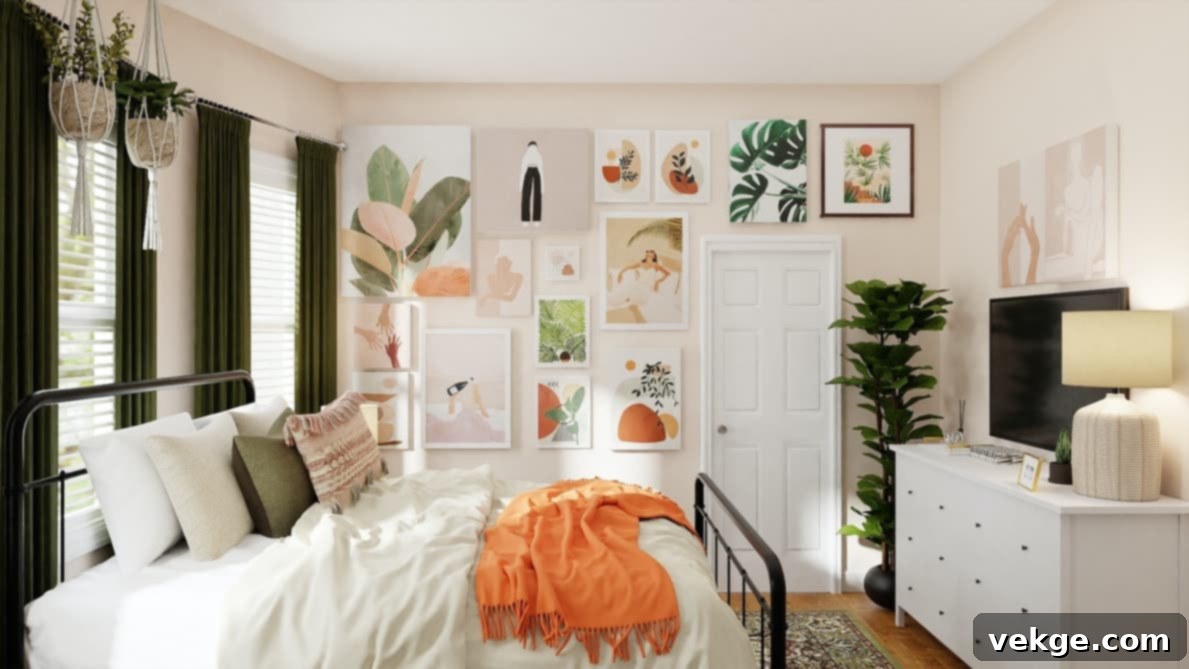Transform Your Sanctuary: 9 Essential Bedroom Decor Tips for Ultimate Comfort and Style
Your bedroom is more than just a place to sleep; it’s your personal sanctuary, a haven where you unwind, recharge, and start each new day. Creating a space that truly reflects your personality and promotes relaxation is paramount. However, embarking on a bedroom renovation or simply refreshing its look can feel overwhelming given the myriad of design options available.
This comprehensive guide aims to simplify that process. We’ve distilled years of design wisdom into 9 essential tips to help you design the bedroom of your dreams. From selecting a harmonious color scheme to investing in luxurious bedding and optimizing your layout, these insights will guide you in crafting a space that feels uniquely yours – a true retreat from the outside world.
So, whether your taste leans towards a cozy, traditional aesthetic or a sleek, modern minimalist style, prepare to transform your bedroom into the ultimate personal haven. Let’s dive into these foundational principles that will empower you to create a beautiful and functional space you’ll cherish.
Tip #1: Cultivate a Cohesive Color Palette for Serene Bedroom Decor
The foundation of any inviting bedroom begins with a well-chosen color palette. A cohesive palette ensures that all elements in your room work together harmoniously, creating a sense of calm and unity. The right colors can dramatically influence your mood, making it crucial to select shades that promote relaxation and comfort.
To begin, observe the existing elements in your bedroom: the color of your flooring, any large furniture pieces you plan to keep, or even a piece of art you adore. These existing features can serve as excellent starting points for your color scheme. Decide whether you prefer a bold and vibrant atmosphere that energizes you, or a more subdued, neutral palette that fosters tranquility. Earthy tones, soft blues, calming greens, and warm grays are often favored for bedrooms due to their inherent ability to soothe.
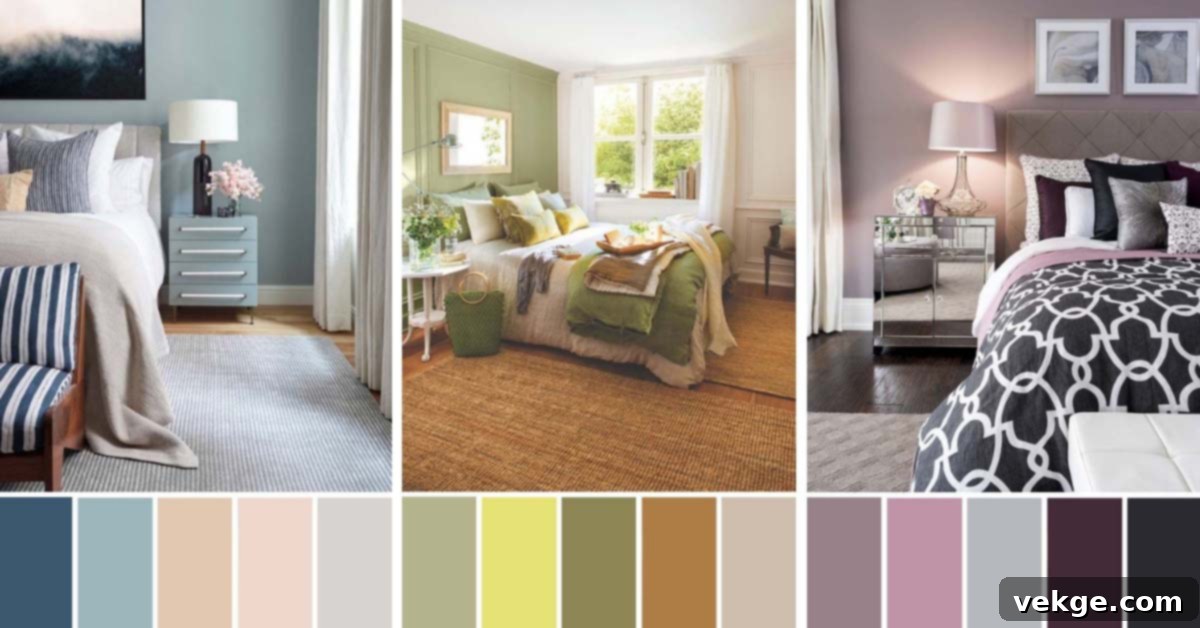
Integrating your chosen colors can be as simple as adding a few decorative throw pillows or a statement rug, or as transformative as painting an accent wall behind your bed. When in doubt, a color wheel can be an invaluable tool to understand complementary, analogous, and monochromatic schemes. Additionally, drawing inspiration from nature – think of sunset hues, forest greens, or ocean blues – often leads to effortlessly harmonious and calming combinations. Ultimately, choose colors that resonate deeply with you and evoke a sense of peace and belonging.
Tip #2: Invest in Luxurious and Comfortable Bedding
The bed is undeniably the focal point of any bedroom and serves as the epicenter of comfort. Given that we spend roughly one-third of our lives sleeping, investing in high-quality, comfortable bedding is not merely an indulgence but a necessity for ensuring restful sleep and waking up refreshed. Your bedding selection significantly impacts both your sleep quality and the overall aesthetic of your bedroom decor.
When selecting bedding, prioritize materials that feel soft and luxurious against your skin. Premium cotton (like Egyptian or Supima cotton), breathable linen, incredibly soft bamboo, or even sumptuous silk are excellent choices that offer varying textures and benefits. While thread count often indicates softness, it’s also crucial to consider the weave and fiber quality for true comfort. Higher thread counts can certainly offer a more opulent feel, but a lower thread count in a superior fiber can still provide exceptional comfort and durability.

Beyond sheets and duvet covers, the right mattress and pillows are equally critical. A supportive mattress tailored to your sleeping preferences is essential for spinal alignment and overall body comfort. Similarly, selecting pillows that provide optimal neck support can prevent stiffness and improve sleep quality. Don’t shy away from investing in these key items; they are foundational to your well-being.
Finally, remember that bedding also plays a vital role in your room’s style. Choose patterns, textures, and colors that complement your overall bedroom palette and contribute to the inviting ambiance you desire. Layering different textures – a soft duvet, a chunky knit throw, and an assortment of decorative pillows – can add depth and warmth, making your bed look utterly irresistible.
Tip #3: Add Layers of Lighting for Elevated Bedroom Decor
Effective lighting design can dramatically transform a bedroom, moving it from merely functional to genuinely atmospheric and inviting. Rather than relying on a single overhead light, incorporating various layers of lighting allows you to control the mood, highlight specific areas, and cater to different activities throughout the day or night. This multi-layered approach is key to an elevated bedroom decor.
Consider three main types of lighting in your bedroom design: ambient, task, and accent lighting. Ambient lighting, such as a central ceiling fixture, recessed lights, or soft wall-mounted fixtures, provides overall illumination for the room. This base layer should be gentle and dispersed, avoiding harsh glares. Task lighting is essential for specific activities, like reading in bed (bedside table lamps), getting dressed (dresser or closet lights), or working (desk lamp). Accent lighting, on the other hand, is purely for aesthetic enhancement. This could include sconces framing artwork, picture lights, or even string lights to create a romantic or whimsical glow, drawing attention to decorative elements or architectural features.
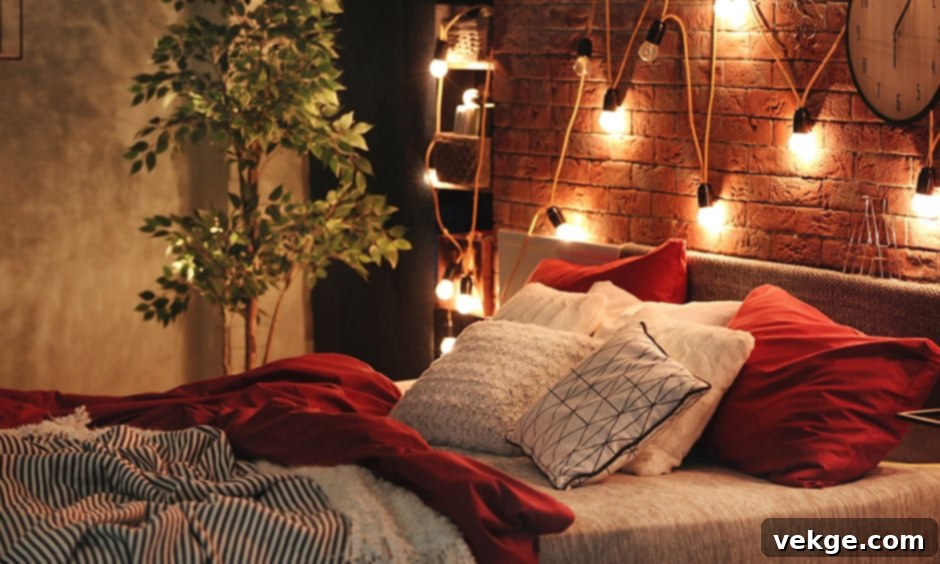
When implementing these layers, pay close attention to the placement and intensity of each light source. You want sufficient illumination for functionality without it being overwhelming or disruptive to your sleep cycle. Installing dimmer switches on most or all of your light sources offers unparalleled flexibility, allowing you to fine-tune the ambiance from bright and functional to soft and intimate with ease. Don’t forget to leverage natural light during the day, using sheer curtains or blinds to control its intensity while maintaining privacy.
Tip #4: Maximize Storage for a Utilitarian and Serene Bedroom
A cluttered bedroom can be a significant source of stress, undermining the very purpose of a personal sanctuary. Maximizing storage is paramount to creating a serene, functional, and organized bedroom decor. By strategically integrating smart storage solutions, you can keep clutter at bay, ensuring your space feels peaceful and visually appealing.
One of the most effective ways to boost storage, especially in smaller bedrooms, is to invest in multi-functional furniture. Consider a bed frame with built-in drawers underneath – a fantastic solution for storing extra bedding, out-of-season clothes, or shoes. Similarly, ottomans or benches at the foot of your bed can provide both seating and hidden storage. Dressers and nightstands with ample drawer space are also essential for keeping daily essentials neatly tucked away. For smaller items, stylish storage boxes or decorative baskets can organize anything from books to accessories, maintaining a tidy appearance.

Don’t overlook vertical space. Walls offer incredible opportunities for additional storage. Install wall-mounted shelves or floating shelves above your bed, desk, or dresser to display books, decorative items, or small plants, freeing up floor space. Hanging organizers on the back of doors or inside closets can also be remarkably effective for accessories or less-frequently used items. Ultimately, thoughtful storage design contributes significantly to a bedroom that feels calm, spacious, and truly restorative.
Tip #5: Incorporate Plants for Natural Bedroom Decor and Well-being
Bringing the outdoors in is a powerful way to enhance your bedroom decor, and incorporating plants is an excellent means to achieve this. Plants not only add a vibrant touch of nature and visual interest to your space, but they also offer tangible benefits, such as improving air quality, boosting mood, and fostering a sense of calm and relaxation, making your bedroom feel more alive and refreshing.
When selecting plants for your bedroom, it’s crucial to consider the amount of natural light the room receives. For bedrooms with limited natural light, opt for low-maintenance varieties that thrive in dimmer conditions. Excellent choices include succulents (which require minimal water and light), resilient snake plants, ZZ plants, or Pothos. If your bedroom is blessed with ample sunlight, you have a wider array of options, such as ferns, peace lilies, or even small indoor trees, which can make a significant statement.
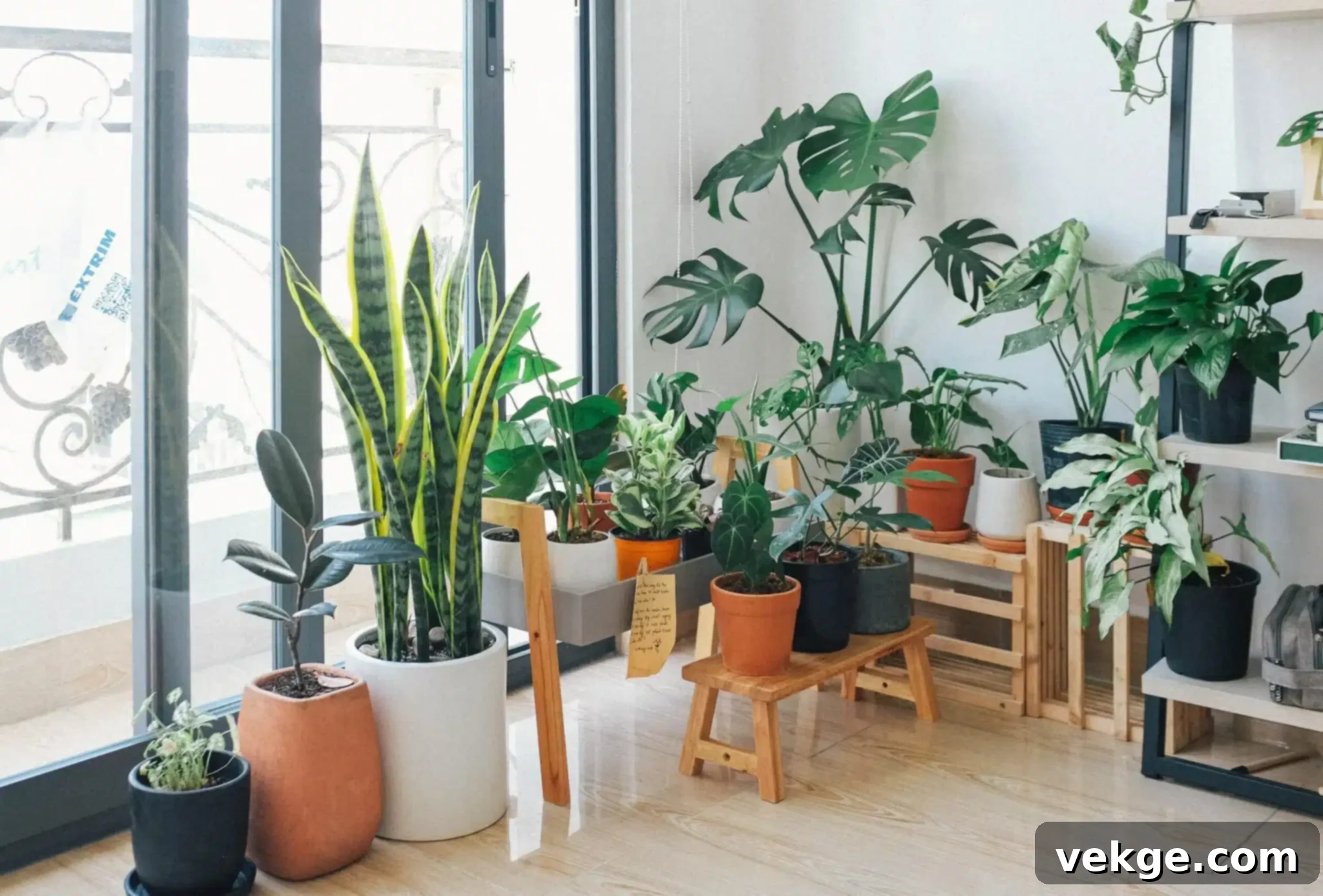
Beyond plant species, also consider their size and placement. Smaller plants in decorative pots can adorn windowsills, nightstands, or floating shelves, adding subtle greenery. Larger floor plants can fill an empty corner, adding drama and a sense of lushness. Hanging plants can add vertical interest and save surface space. By strategically placing plants, you can introduce organic textures, fresh colors, and a palpable sense of vitality that enhances the overall tranquility and beauty of your bedroom.
Tip #6: Create a Compelling Focal Point
Every well-designed room benefits from a focal point – a central element that immediately captures the eye and grounds the space. In bedroom decor, a thoughtfully established focal point draws attention, adds character, and provides a visual anchor around which the rest of your design can revolve. Without one, a room can feel disjointed or lack personality.
There are numerous creative ways to establish a focal point in your bedroom. One classic approach is to use a statement piece of furniture. An ornate, upholstered, or uniquely designed headboard instantly commands attention and becomes the natural centerpiece of your bed wall. Alternatively, a striking piece of artwork positioned strategically above the bed or on a prominent wall can serve the same purpose, drawing the eye with its colors and composition. For those seeking a more architectural approach, painting an accent wall in a bold color or applying a textured wallpaper behind the bed creates a powerful and dramatic focal point.
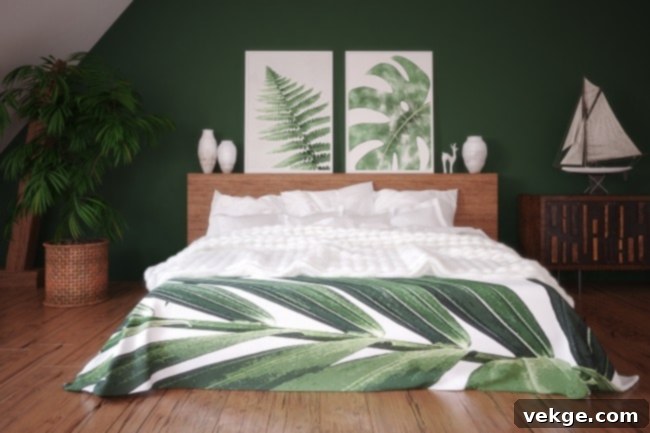
Beyond the bed wall, other elements can act as focal points. A beautifully framed mirror, a unique fireplace, or a large, captivating artwork can all draw the eye. The key is to select one dominant element and ensure other decorative items support it rather than compete with it. A well-executed focal point adds depth, interest, and a clear sense of intention to your bedroom design, making it feel thoughtfully curated and aesthetically pleasing.
Tip #7: Personalize with Artwork and Thoughtful Accessories
While foundational elements like color and furniture set the stage, it’s the artwork and accessories that truly infuse your bedroom decor with personality, character, and a sense of belonging. These personal touches transform a generic space into a reflection of your unique style, interests, and memories, making it genuinely yours.
When selecting artwork and accessories, let your individual taste be your guide. Whether you’re drawn to bold, vibrant pieces, minimalist prints, sentimental photographs, or handcrafted items, choose what resonates with you. Consider creating a gallery wall with a mix of framed art, photos, and mirrors, or select a single large piece that makes a statement. Accessories like decorative vases, sculptures, candles, and curated book collections on your nightstand or dresser can add layers of interest and tell a story.
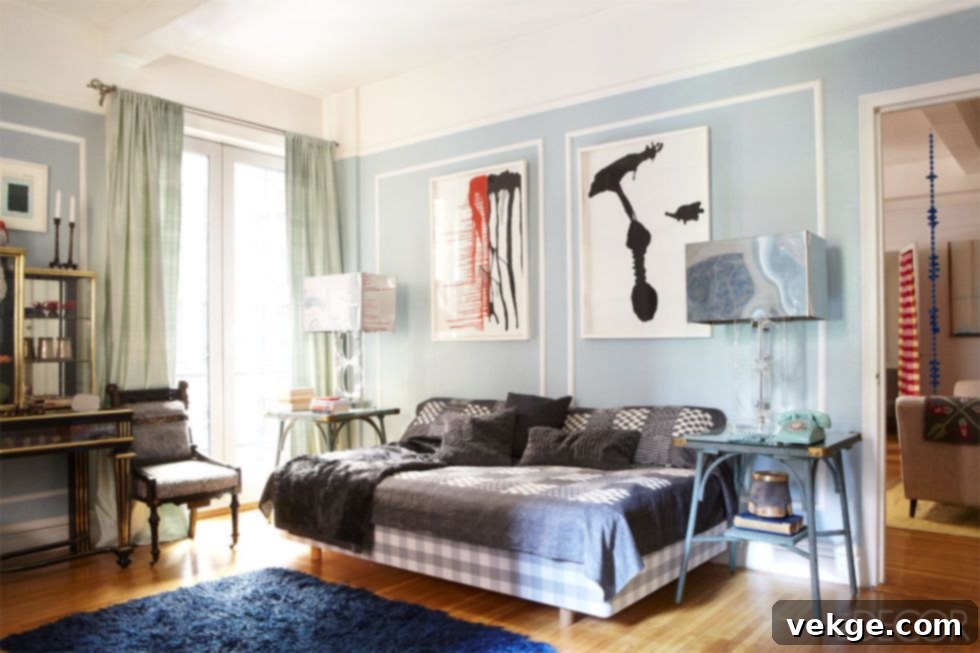
Beyond aesthetics, many accessories also serve functional roles. A beautiful throw blanket draped artfully over the bed or an armchair adds a layer of warmth and texture while also being readily available for cozy evenings. Mirrors can make a room feel larger and brighter, while decorative boxes can conceal small items. The key is to curate your collection, ensuring each piece contributes to the overall ambiance and speaks to your personal narrative without creating clutter. These curated elements are what truly make a bedroom feel like home.
Tip #8: Experiment with Texture for Personalized Bedroom Decor
While color and form are crucial, texture is the unsung hero of compelling bedroom decor. Incorporating a variety of textures through fabrics, finishes, and materials adds immense depth, warmth, and visual interest to a space, transforming it from flat to inviting and luxurious. It’s the tactile dimension that makes a room feel truly comfortable and personal.
There are countless ways to introduce texture into your bedroom design. Start with textiles: think a plush, high-pile rug underfoot, a soft velvet headboard, a chunky knit throw blanket artfully draped over your bed, or an assortment of decorative pillows in different fabrics like linen, faux fur, or silk. These items not only add softness and comfort but also provide tactile pleasure and visual richness, encouraging you to relax and sink into the space.
Beyond fabrics, consider the finishes and materials of your furniture and decor. A distressed wooden nightstand can add a rustic, tactile element that contrasts beautifully with smooth, modern lines. Metallic accents, such as a brass lamp or a chrome picture frame, introduce a different type of texture – a sleek, reflective quality. Incorporating natural materials like stone, rattan, or woven baskets can add organic texture and a connection to the natural world. Even the walls can contribute; a subtle grasscloth wallpaper or a limewash paint finish can introduce a nuanced texture that adds sophisticated character.
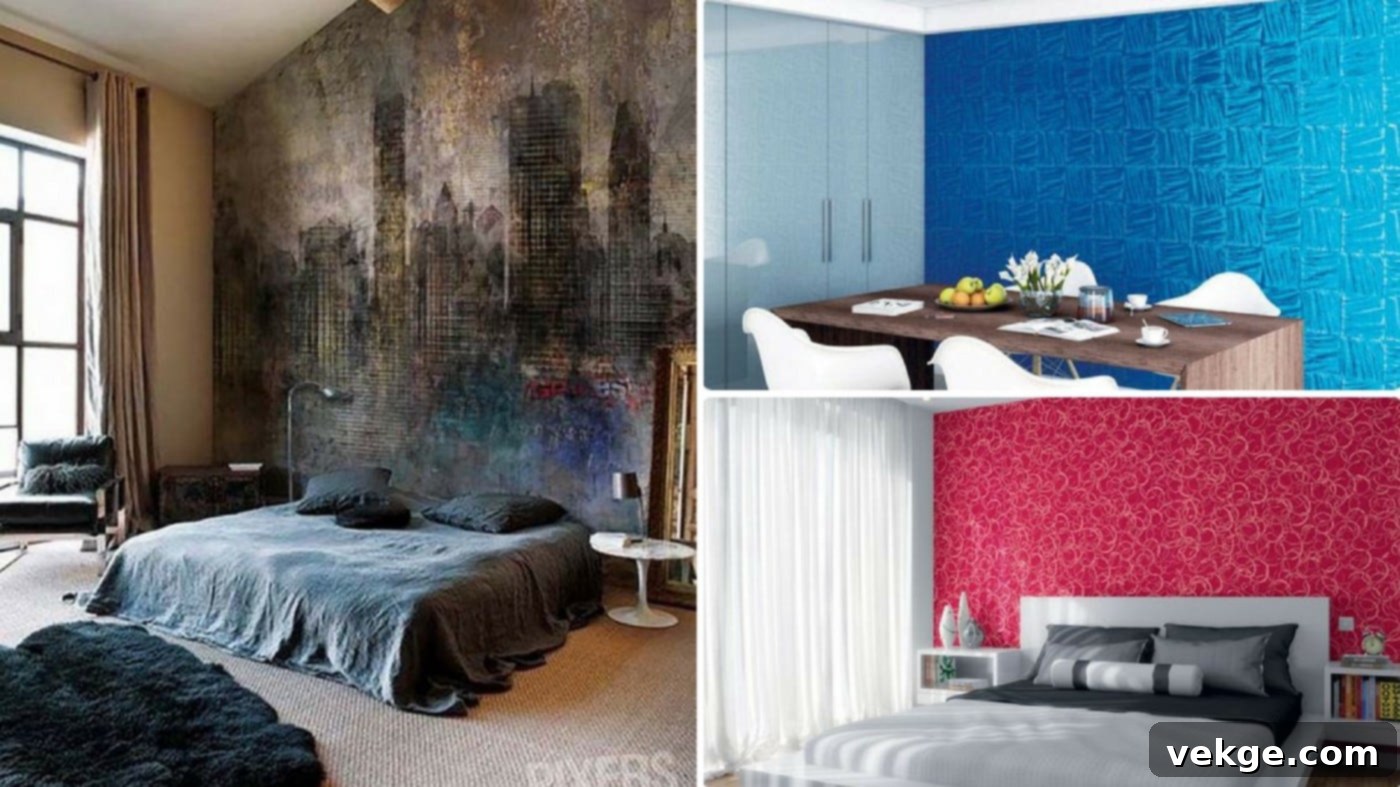
The art of experimenting with texture lies in layering different elements to create a rich, multi-sensory experience. A smooth duvet cover paired with a nubby throw and a sleek metallic lamp creates a dynamic contrast. By carefully balancing hard and soft, rough and smooth, matte and shiny, you can craft a bedroom that feels incredibly inviting, visually captivating, and deeply personalized.
Tip #9: Consider the Function of Your Bedroom Before Selecting Decor Items
Before you even begin selecting bedroom decor items, it’s crucial to first define the primary functions of your bedroom. Is this space solely for sleeping and intimate relaxation? Or does it need to accommodate multiple activities, such as reading, watching TV, working from home, or even a dedicated yoga or meditation corner? Understanding these core functions will directly inform your design choices, ensuring your bedroom is not just beautiful, but also highly functional and supportive of your daily life.
The layout and placement of furniture are key considerations. If you’re an avid reader, ensure your bedside table is easily accessible and large enough for books and a lamp, perhaps accompanied by a comfortable armchair in a well-lit corner. For those who frequently work from home, integrating a discreet desk or workstation becomes essential. This might involve a small, wall-mounted desk or a secretary desk that can be closed when not in use to maintain the room’s restful ambiance. Consider the flow of traffic in the room – ensure there’s enough space to move freely without bumping into furniture, especially around the bed and closet.
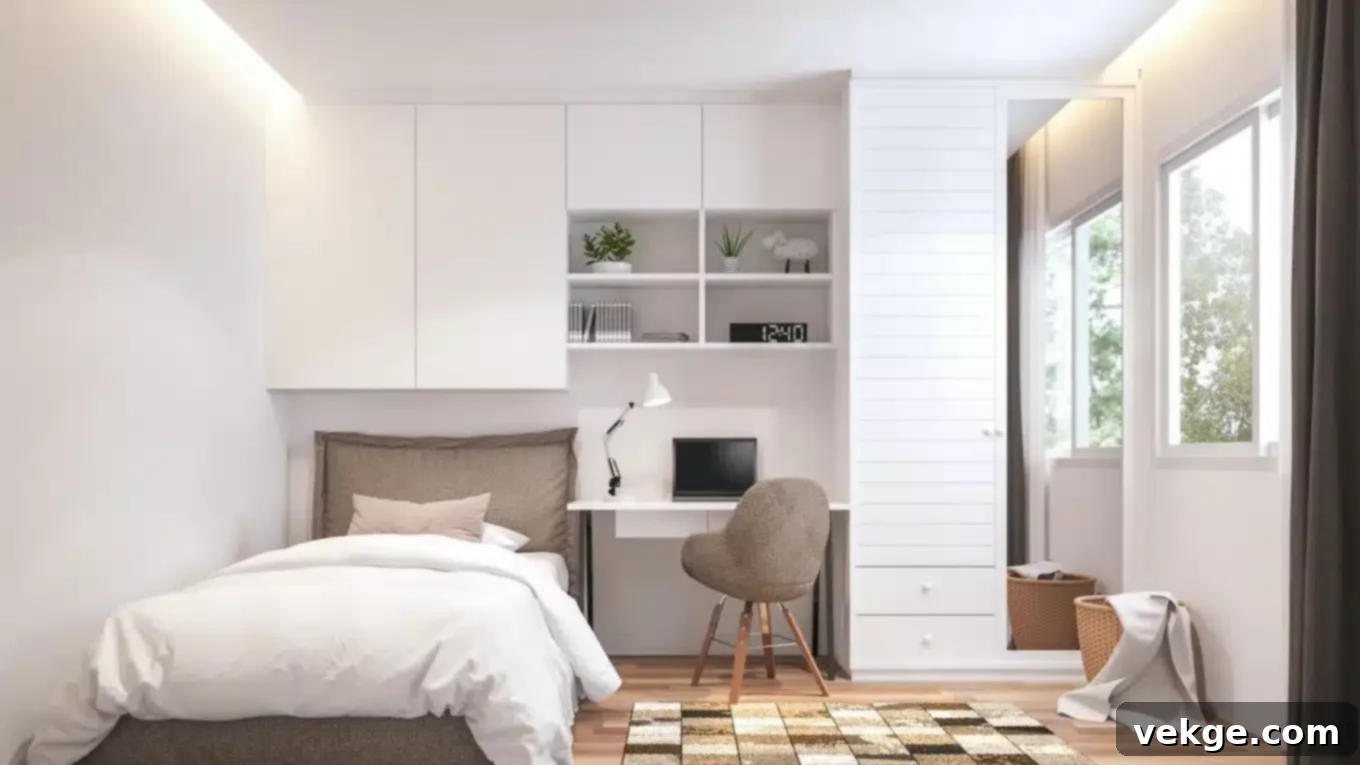
Furthermore, the function dictates elements like technology integration. If you watch TV in bed, think about how to subtly incorporate the screen without it dominating the space when not in use. Prioritize ergonomics for any activity that requires prolonged sitting or specific postures. By thoughtfully addressing these functional requirements first, you can ensure that your bedroom not only looks stunning but also serves as an efficient, comfortable, and truly personalized space that enhances your daily routine and supports your well-being.
Conclusion: Crafting Your Ultimate Bedroom Retreat
Designing a bedroom that truly feels like a personal sanctuary is an art, but with these 9 essential tips, you’re well-equipped to create a space that balances comfort, style, and functionality. We’ve explored everything from establishing a cohesive color palette that calms your senses and investing in luxurious bedding for unparalleled comfort, to optimizing lighting for ambiance, maximizing storage to banish clutter, and bringing nature indoors with plants.
Remember the importance of creating a focal point to give your room structure, personalizing with artwork and accessories that tell your unique story, and experimenting with diverse textures to add depth and warmth. Most critically, always consider the practical functions of your bedroom to ensure it supports all your daily activities, from restful sleep to quiet work or leisure.
Whether you’re starting with a blank canvas or simply looking to refresh your existing space, these principles will help you elevate your bedroom design. Don’t be afraid to mix and match styles, experiment with new ideas, and infuse your unique personality into every corner. Your bedroom is your private retreat, a haven designed for your ultimate well-being, and it should reflect everything you love.
We hope these comprehensive tips have inspired and empowered you to embark on the journey of creating the bedroom of your dreams. Happy decorating!
